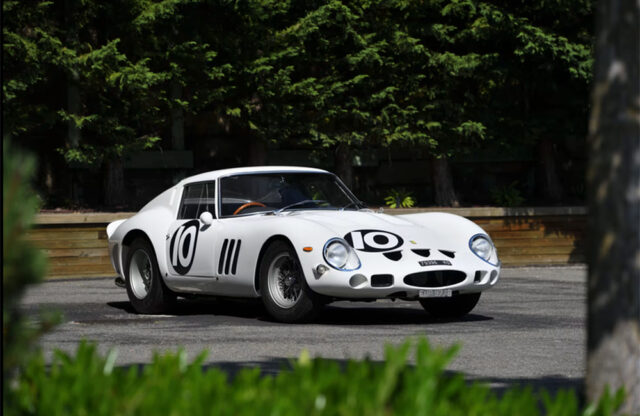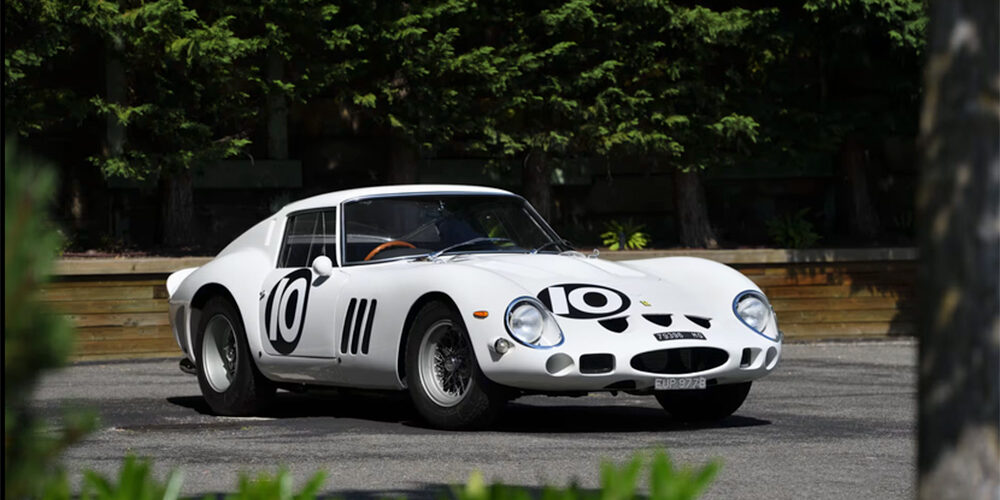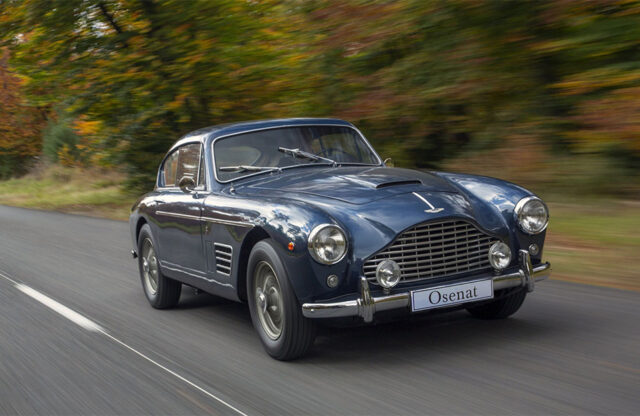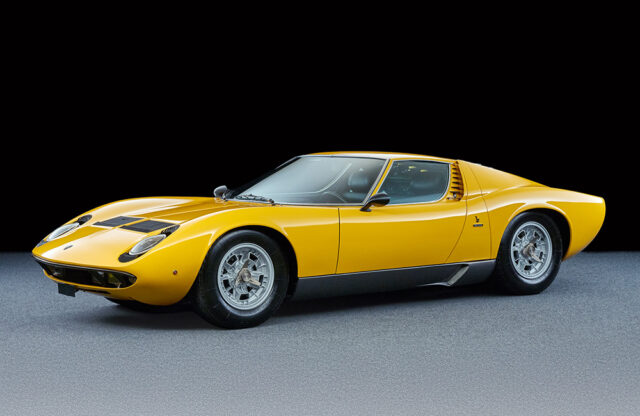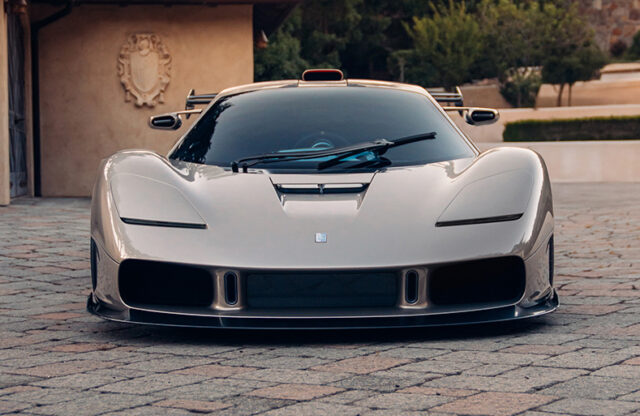The Ferrari 250 GTO ordered new by John Coombs and driven by the likes of Graham Hill, Mike Parkes and Jack Sears – and the only 250 GTO finished in white – is to be put up for auction by Mecum at its Kissimmee sale in early 2026.
Chassis 3729 was ordered by Coombs to outwardly shock Jaguar into bringing its E-type up to the same standard as the racing Ferraris and Aston Martins of the day – after all, aside from running his Jaguar-affiliated race team, he was a road car dealer, too. However, obtaining a racing Ferrari painted white isn’t an easy task, and it is believed that it took the skilled intervention from Alfredo Reali – Ferrari’s liaison for bespoke client requests – to get the colour scheme approved by the powers that be at Maranello. The white GTO was delivered on July 28, 1962, as a standard car with the later, wider radiator opening, two vents on the wings, circular brake ducts and sidelights semi-recessed alongside the headlamps. It still had the earlier bolt-on rear spoiler, however.
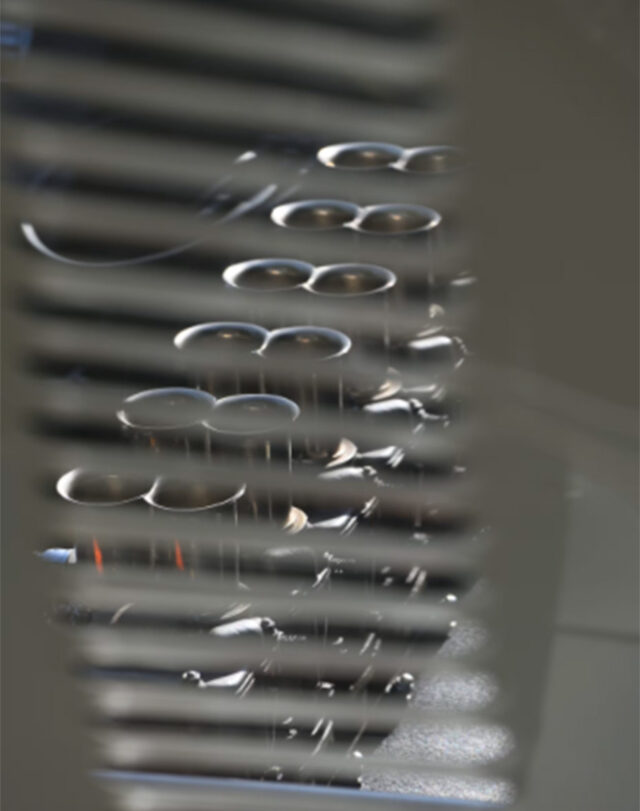
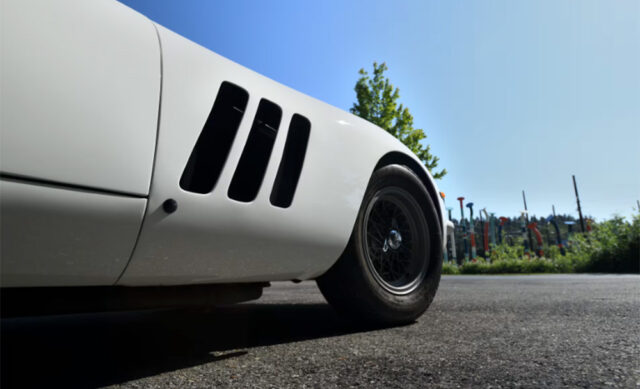
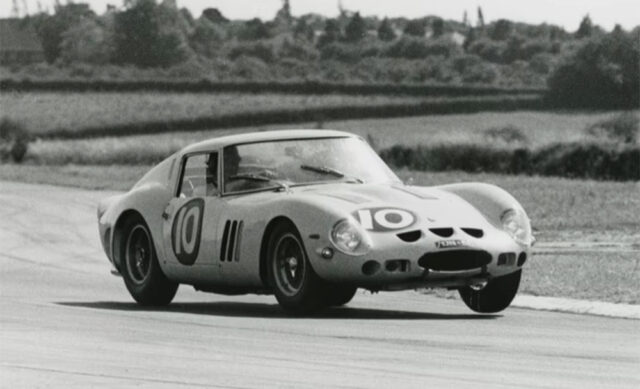
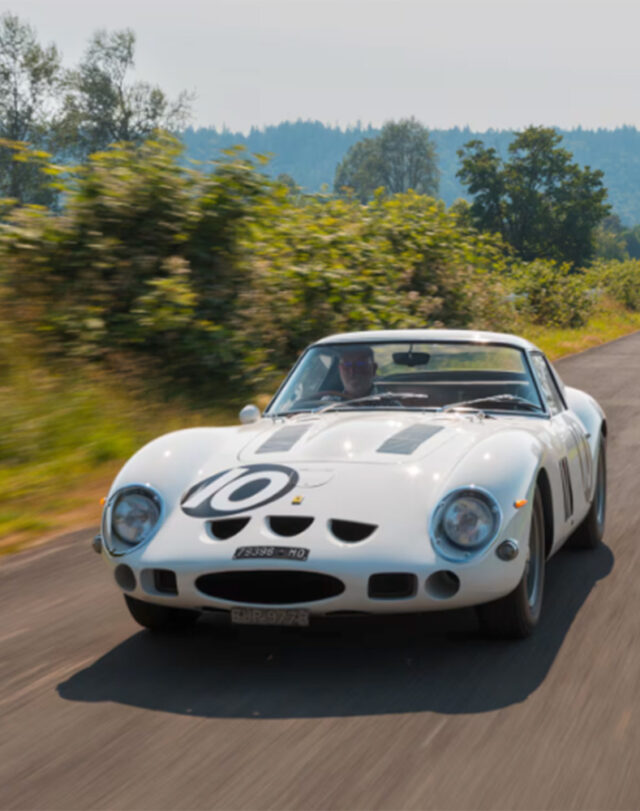
During John Coombs’s ownership, the car known as the Bianco Speciale made its competitive debut with Roy Salvadori at the wheel, in the British Racing and Sports Car Club’s Peco Trophy at Brands Hatch on the first Monday of August 1962. It finished second overall.
Just a fortnight later, the car was handed to future World Champion Graham Hill for the Royal Automobile Club Tourist Trophy at Goodwood. In the meantime, Coombs’s skilled mechanics had stripped off the driving lamps, opened a new vent on either front wing and fitted twin rows of louvres into the bonnet to improve cooling.
The race itself turned into a fierce contest among a quartet of GTOs driven by John Surtees, Mike Parkes, Hill and Innes Ireland. Ireland emerged as the winner, with Hill pushing hard in chassis 3729 GT and crossing the line just 3.6 seconds behind, headlights still blazing.
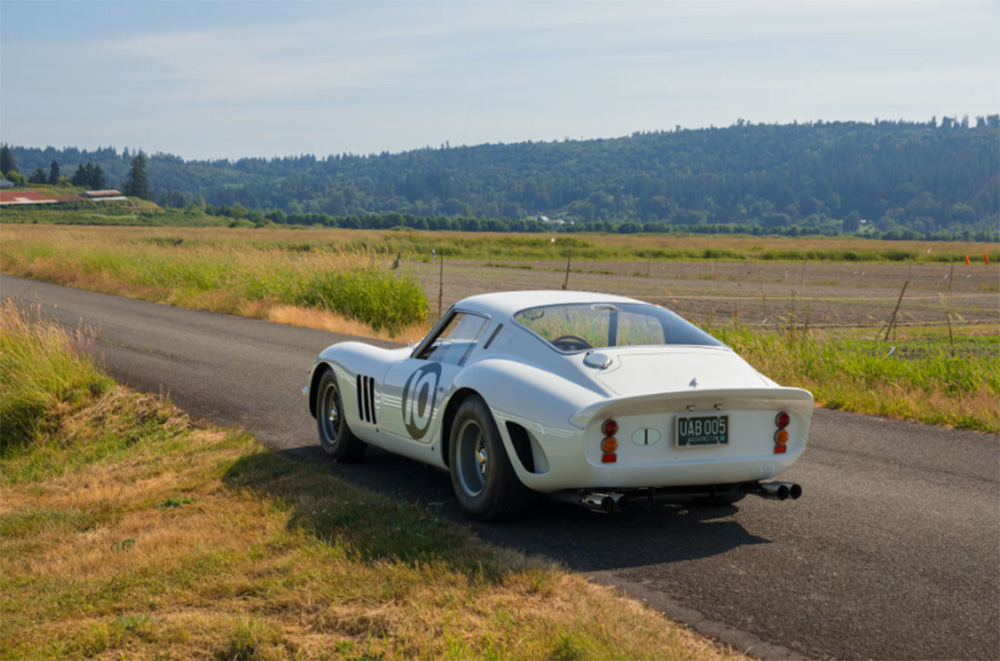
At the close of the season, despite later claims otherwise, Coombs lent the car to Jaguar for a detailed evaluation to support the development of its Lightweight E-type programme. The Big Cat’s aerodynamicist Malcolm Sayer noted that while the GTO had “a very good basic shape, particularly its front half”, its aerodynamic efficiency suffered due to numerous holes and gaps in the bodywork. Many of these, he observed, served no real purpose and could have been removed with more refined design work.
The car was also given three days of back-to-back testing at MIRA, conducted by Norman Dewis. With half a tank of fuel and Derrick White riding alongside, Norman Dewis ran a quarter-mile in the Ferrari in 13.5 seconds, shifting at 8000rpm and hitting 110mph by the line. In comparison, the Jaguar managed 13.7 seconds, shifting at 6000rpm and topping out at 107mph. Dewis noted the Ferrari’s gearbox was sharper and quicker to use, although on paper the Jaguar was marginally faster to 60mph (4.4 seconds vs 4.8) and to 100mph (10.9 vs 11.4). However, White pointed out these acceleration times didn’t account for the difference in shift speed. The Ferrari ran a shorter 4.6:1 rear axle, while the Jaguar used a longer 3.77:1 ratio.
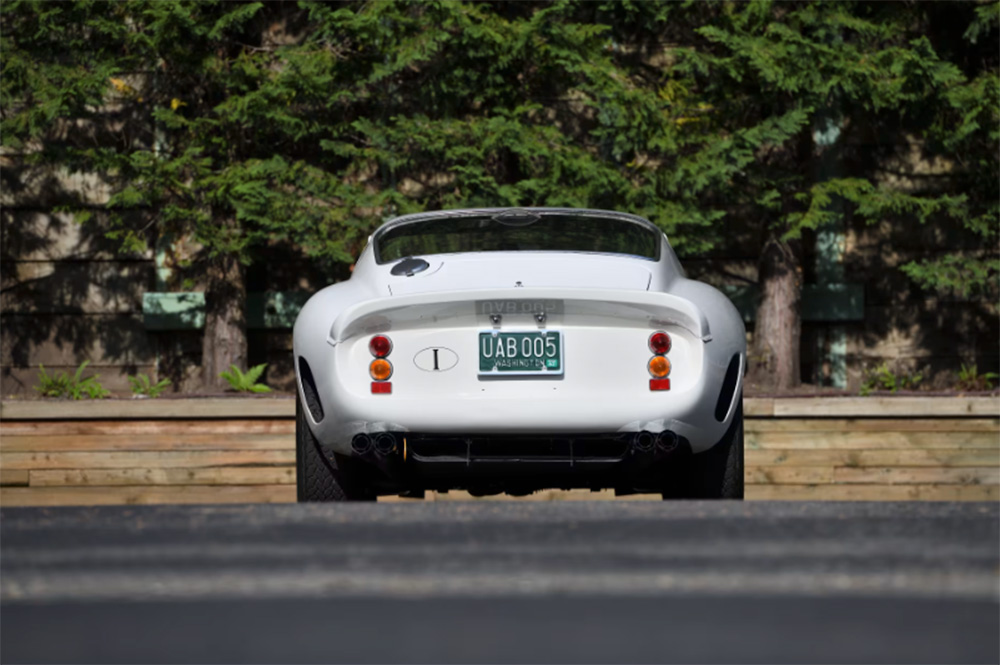
Top speed tests using MIRA’s timing equipment showed the Ferrari reaching 147.5mph and the Jaguar topping out at 132.1mph. The GTO hit 8000rpm just before the speed trap but wouldn’t rev any further, likely due to valve float. The E-type held steady at 6000rpm well before the traps and stayed there through the measured section.
Braking tests from 60mph were conducted before Dewis put both cars through their paces on MIRA’s constant-radius steering pad. The GTO showed more understeer than the Jaguar, but the E-type rolled more through the corners. In dynamic handling tests, the report concluded that the Ferrari was easier to control overall, with sharper and more precise steering feel. The results were conclusive: although the Ferrari fell slightly short in outright power and torque, it proved superior in nearly every other area.
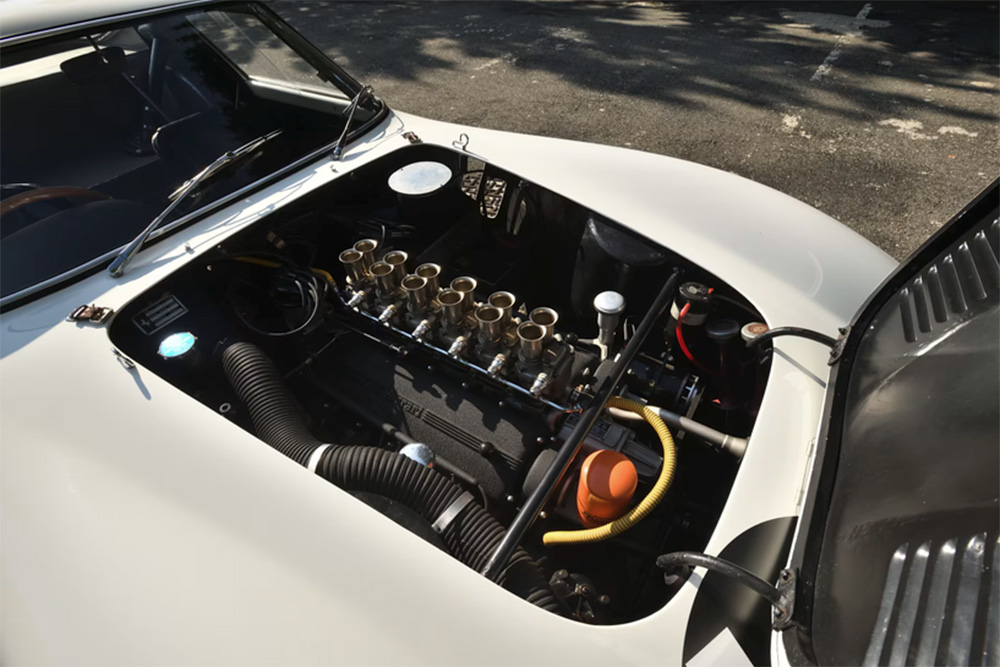
Ahead of the 1963 season, the GTO was sent back to Maranello for a rebuild in preparation for another year of competition in Britain. The responsibility of returning the car to the UK by road fell to David Salamone – later known for his role as ‘Dominic’ in The Italian Job – and his father, a friend of Coombs’s.
The journey began with a mishap in Milan, where a garage attendant mistakenly filled the oil tank with petrol. Fortunately, a nearby Ferrari mechanic was able to put things right. With the car back in working order, the pair continued through Switzerland, and at one point the underage Salamone even took a turn behind the wheel of the 170mph racer on public roads.
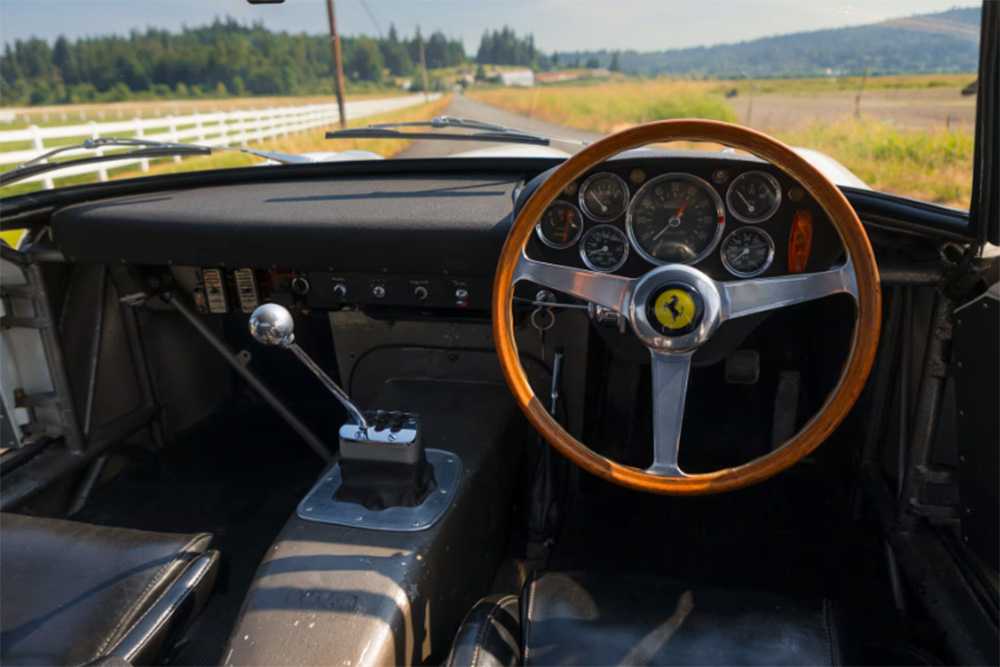
That season, Coombs’s 250 GTO proved one of the dominant cars in British GT racing, regularly seen at the front of the field with top drivers such as Mike Parkes, Mike McDowell, Michael Salmon and Jack Sears behind the wheel.
The highlight of the year was once again August’s Tourist Trophy at Goodwood. For the event, Coombs partnered with Maranello Concessionaires to field two 250 GTOs. Graham Hill was placed in a newer example, while Parkes took the wheel of 3729 GT. The pair ran away from the field, locking out the top two positions. Parkes led for much of the race but, perhaps following instructions from the pit wall, eased off just enough to allow Hill through, finishing second by only 0.4 seconds.
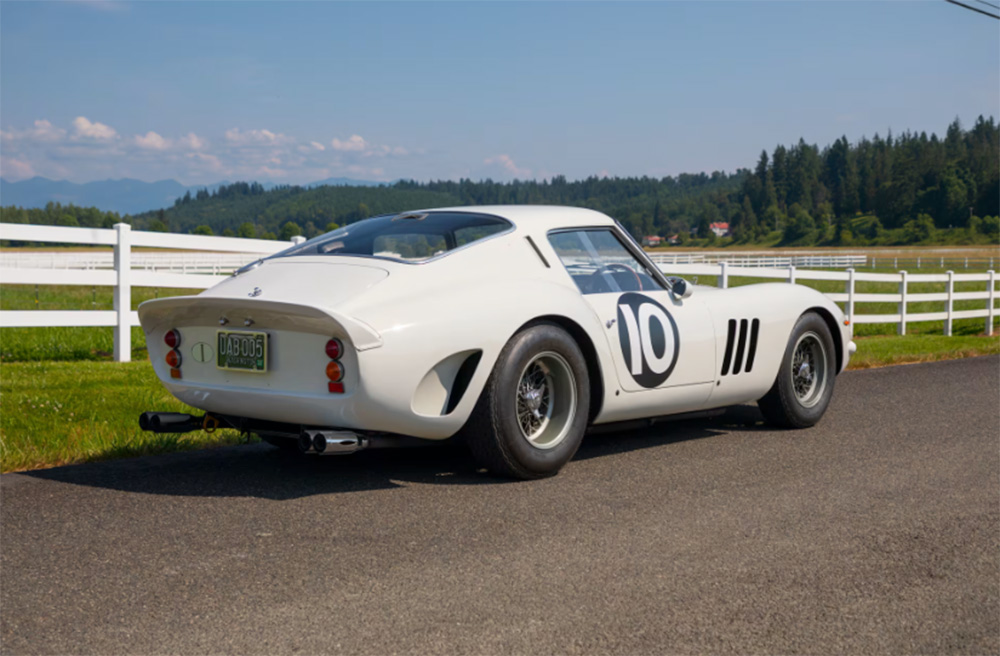
In 1964, the GTO changed hands, leaving Coombs’s ownership for that of Eddie Portman. Although not yet titled, Portman would later become the 9th Viscount after succeeding his uncle in 1967. The Portman family’s roots lie in the south-west of England, with their fortune built on the Portman Estate. This vast property includes a 110-acre stretch in central London, first acquired in the 1500s and developed from the 1700s onward. Today, the estate forms a key part of Marylebone, just north of Oxford Street. He was no stranger to Ferrari ownership, owning a 250 SWB and a 250 LM via Maranello Concessionaires. He used the 250 GTO sparingly in competition, although it did make an appearance at the 1964 Tourist Trophy at Goodwood, where Ferrari F1 driver Richie Ginther brought it home in ninth place.
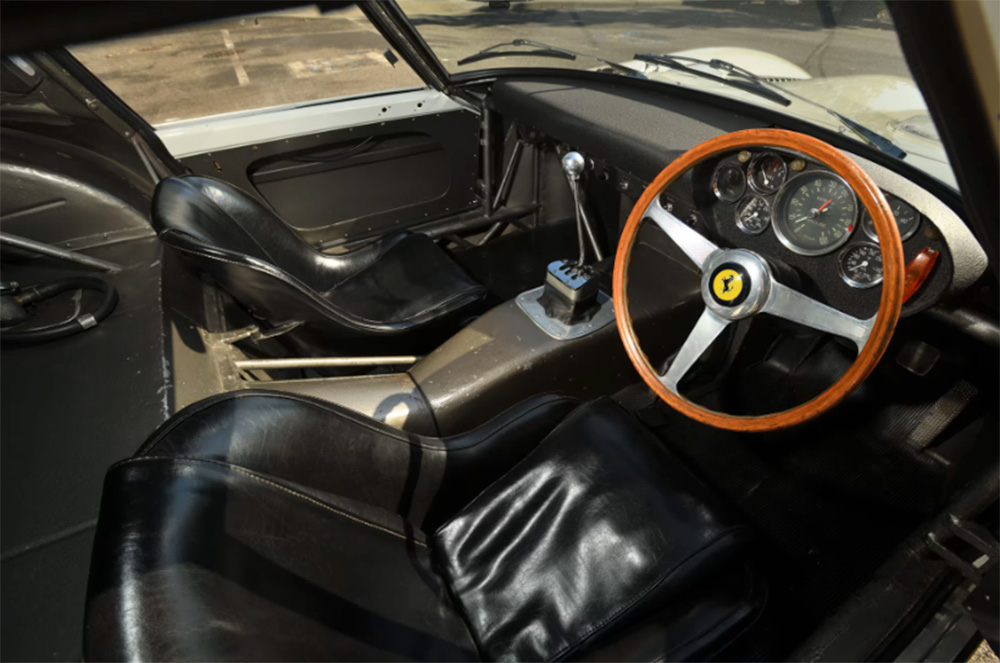
Not long after, Portman sold the car to John Pearce, a trader dealing in racing parts and wheels. At around this time, he devised a Ferrari-engined Cooper special. The car was a 1964 Works Cooper chassis (Cooper T73) lengthened at the engine bay in order to take the V12 engine from the ex-John Coombes white Ferrari 250 GTO. This Cooper-Ferrari appeared at the British Grand Prix with Chris Lawrence behind the wheel. He qualified second to last, nearly 10.0 seconds slower than Jack Brabham’s pole time, but managed to finish the race – albeit seven laps behind and as the final classified runner. They made another attempt at the German Grand Prix, where Lawrence again struggled to match the pace and was eventually forced to retire due to suspension failure.
In 1967, Pearce entered the International Trophy at Silverstone. His transporter arrived ahead of the event carrying the Cooper-Ferrari and two of his Pearce-Martin single-seaters. Unfortunately, during the night the vehicle caught fire, destroying all three cars. It is believed the original engine from 3729 GT was lost in the blaze.
In 1967, the engine from 2735 GT – the 250 GT SWB SEFAC Hot Rod driven by Rob Walker and run by Maranello Concessionaires – was fitted. This was soon replaced with a 250 GTE 2+2 unit installed by Bob Houghton, and the car was acquired in 1967 by Neil Corner, a collector and highly capable amateur racer, who paid £2500 for it. Corner had it resprayed in red and enjoyed it on both the road and the track before selling it in 1970 to one of its former pilots, Jack Sears, who’d asked for first refusal on the car after stopping by on a hunting trip to Scotland two years prior.

Sears, a Norfolk farmer and well respected racer in his own right, having won the first British Saloon Car Championship in 1958 and 1963, kept the 250 GTO for nearly three decades, often driving it from East Anglia to Bob Houghton via public roads for servicing.
Eventually, the car crossed the Atlantic to its current North American custodian, the former COO and president of Microsoft Jon Shirley, who restored it to its original Coombs-era white paintwork in 2015, returning it to the appearance it wore in period competition. In the 2000s, a new engine block from Ferrari Classiche was built for this car. It achieved Red Book certification in 2008.
In Shirley’s ownership it has been raced at events at Monterey and Goodwood, and it has also been displayed at the Pebble Beach Concours d’Elegance and Hampton Court Concours of Elegance. It has attended the GTO Anniversary Reunions, too. Now it’s headed to Mecum’s Kissimmee sale, which takes place between January 6-18, 2026.
More details are available here.
